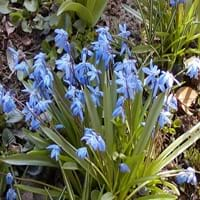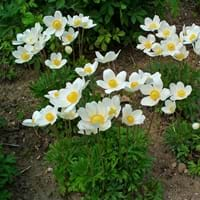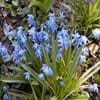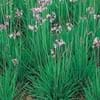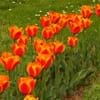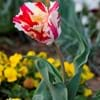Life Span
Perennial
Perennial
Type
Bulb or Corm or Tuber
Tender Perennial
Origin
Europe, South Africa, Asia
Mediterranean
Types
Scilla Siberica, Scilla Bifolia, Scilla Peruviana
Blue Anemone, Greek Windflower, Carolina Anemone, Chinese Anemone
Habitat
Cultivated Beds, Woodland Garden
Wild
USDA Hardiness Zone
2-8
8-12
AHS Heat Zone
Not Available
12-5
Sunset Zone
21,22
4, 5, 6, 7, 8, 9, 10, 11, 12, 13, 14, 15, 16, 17, 18, 19, 20, 21, 22, 23, 24
Habit
Clump-Forming
Clump-Forming
Flower Color
White, Blue, Purple, Pink, Violet
Sky Blue
Flower Color Modifier
Bicolor
Not Available
Fruit Color
Not Available
Not Available
Leaf Color in Spring
Not Available
Green
Leaf Color in Summer
Light Green
Yellow, Green
Leaf Color in Fall
Several shades of Green
Not Available
Leaf Color in Winter
Light Green
Not Available
Leaf Shape
Lance shaped
Compound
Plant Season
Not Available
Spring
Sunlight
Full Sun, Partial Sun, Partial shade
Partial Sun, Partial shade
Growth Rate
Not Available
Fast
Type of Soil
Not Available
Loam
The pH of Soil
Not Available
Acidic, Neutral
Soil Drainage
Not Available
Average
Bloom Time
Not Available
Early Spring, Spring, Late Spring, Early Summer
Where to Plant?
Container, Ground, Pot
Ground, Pot
How to Plant?
From bulbs
Seedlings
Plant Maintenance
Medium
Medium
Watering Requirements
Requires regular watering
Medium, Prefer drip-irrigation instead of Over-head watering, Use Mulches to help prevent water loss during hot and windy weather, Water Deeply
In Summer
Lots of watering
Lots of watering
In Spring
Moderate
Moderate
In Winter
Average Water
Average Water
Soil pH
Not Available
Acidic, Neutral
Soil Type
Not Available
Loam
Soil Drainage Capacity
Not Available
Average
Sun Exposure
Full Sun, Partial Sun, Partial shade
Partial Sun, Partial shade
Pruning
No pruning needed
Prune prior to new growth, Remove dead or diseased plant parts, Remove deadheads
Fertilizers
5-10-10 fertilizer
All-Purpose Liquid Fertilizer
Pests and Diseases
Crown rot
Botrytis collar rot, Crown gall, Cucumber mosaic, Downy mildew, Impatiens necrotic spot, Leaf curl, Phytophthora, Rhizoctonia crown rot, Root rot, Rust, Sclerotinia blight, Southern blight
Plant Tolerance
Drought
Drought
Flower Petal Number
Single
Single
Foliage Texture
Medium
Fine
Foliage Sheen
Matte
Matte
Invasive
Not Available
No
Self-Sowing
Not Available
No
Attracts
Birds
Not Available
Allergy
convulsions, Vomiting
Skin irritation
Aesthetic Uses
Ground Cover
Not Used For Aesthetic Purpose
Beauty Benefits
Removes dandruff
Not Available
Environmental Uses
Air purification
Air purification
Medicinal Uses
Antiasthamatic, Bronchitis, Lung Problems
Asthma, Cough, Gout, Menstrual Disorders, Stomach pain
Part of Plant Used
Leaves, Root
Flowers, Leaves
Other Uses
Used as a rodenticide, Used to make hair tonic
Not Available
Used As Indoor Plant
Yes
No
Used As Outdoor Plant
Yes
Yes
Garden Design
Container, Mixed Border, Rock Garden / Wall, Wildflower
Bedding Plant, Container, Mixed Border, Rock Garden / Wall, Wildflower
Botanical Name
SCILLA
ANEMONE 'Harmony Blue'( HARMONY SERIES)
Common Name
Squill
Anemone, Harmony Blue Anemone
In Hindi
Squill
रत्नज्योति
In French
Squille
Anémone
In Spanish
Escila
Anémona
In Greek
σκιλοκρόμμυδο
ανεμώνη
In Portuguese
Cila
Relutantemente
In Polish
Cebulica
Zawilec
In Latin
Scilla
VivoSocial
Phylum
Magnoliophyta
Magnoliophyta
Class
Lilopsida
Magnoliopsida
Order
Liliales
Ranunculales
Family
Liliaceae
Ranunculaceae
Clade
Angiosperms, Monocots
Not Available
Tribe
Hyacintheae
Not Available
Subfamily
Scilloideae
Not Available
Importance of Squill and Anemone
Want to have the most appropriate plant for your garden? You might want to know the importance of Squill and Anemone. Basically, these two plants vary in many aspects. Compare Squill and Anemone as they differ in many characteristics such as their life, care, benefits, facts, etc. Every gardener must at least have the slightest clue about the plants he wants to plant in his garden. Compare their benefits, which differ in many ways like facts and uses. The medicinal use of Squill is Antiasthamatic, Bronchitis and Lung Problems whereas of Anemone is Asthma, Cough, Gout, Menstrual Disorders and Stomach pain. Squill has beauty benefits as follows: Removes dandruff while Anemone has beauty benefits as follows: Removes dandruff.
Compare Facts of Squill vs Anemone
How to choose the best garden plant for your garden depending upon its facts? Here garden plant comparison will help you to solve this query. Compare the facts of Squill vs Anemone and know which one to choose. As garden plants have benefits and other uses, allergy is also a major drawback of plants for some people. Allergic reactions of Squill are convulsions and Vomiting whereas of Anemone have Skin irritation respectively. Having a fruit bearing plant in your garden can be a plus point of your garden. Squill has no showy fruits and Anemone has no showy fruits. Also Squill is not flowering and Anemone is not flowering . You can compare Squill and Anemone facts and facts of other plants too.
